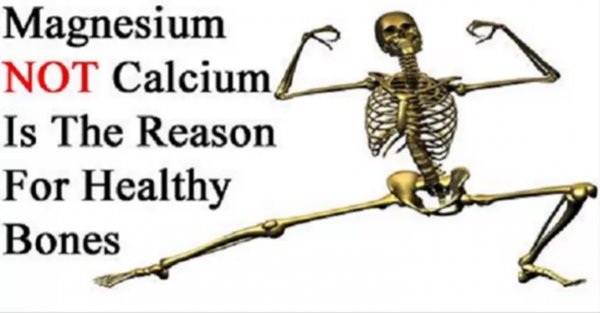All of us thought that calcium is the Holy Grail for our bones and teeth. However, calcium is just one of the many tools for keeping their health. In a study conducted by the Pediatric society in the USA, it was proved that magnesium is much better for the bones in the young population.
Most legends and myths were telling stories that calcium improves the teeth and bones. But, is this true?
According to a 2004 study, people having an excess amount of calcium in the coronary artery are 17 times more likely to suffer from heart attack. LDL levels and an excess amount of calcium are the symptoms of attack.
In a 2007 study it was proved that calcium from foods is better for the health of bones rather than calcium supplements after menopause period. Study of 2008 showed that calcium supplements provoke heart attacks after menopause.
According to the National osteoporosis foundation, the best source for obtaining calcium is the food. People who take calcium through the food don’t need calcium supplements.
Although calcium supplements are promoted by doctors for being completely natural and prevent osteoporosis, if taken on a daily basis, they might worsen your health. The majority of calcium supplements contain calcium carbonate which unlike calcium, they enter cells.
So far, we were brainwashed that the consumption of cheese and milk improve the health of the bones and teeth. However, this is wrong. For the calcium, we need chelating agent. Our body takes the calcium from the body to get it in the blood, which later results in osteoporosis.
According to Steven Abrams, a professor in the Houston College for medicine, the proper amount of magnesium, not calcium, is of an essential importance for the thickness of bones in the youth population.
Children need a lot of things for having healthy bones, including magnesium and calcium. According to experts, parents use to give calcium to their kids for strong bones and teeth. But, now, they have to give magnesium as well.
100 g of magnesium on a daily basis increases the BMD by 2%.
Older populations face fractures more frequently, according to the prof. Kathryn M. Ryder from the University Tennessee. She added that fractures occur as a result of low BMD.
Magnesium supplements
The normal ration between magnesium to calcium is 1:1. Nowadays, it is 2:1, meaning 800 mg calcium in comparison with 400 mg of magnesium.
You can find magnesium in many shapes such as magnesium chloride and chelated. They come in product packs of 250 to 500 mg of magnesium. In addition, you can find a combination of magnesium and calcium pills. The RDA for magnesium is 400 mg on a daily basis.
Take it alongside with meals or after them.
Moreover, soak in Epsom bath because it renews the magnesium stores.
You can get magnesium mostly by consumption of leafy greens, seeds, cacao, and nuts.
Sources:
